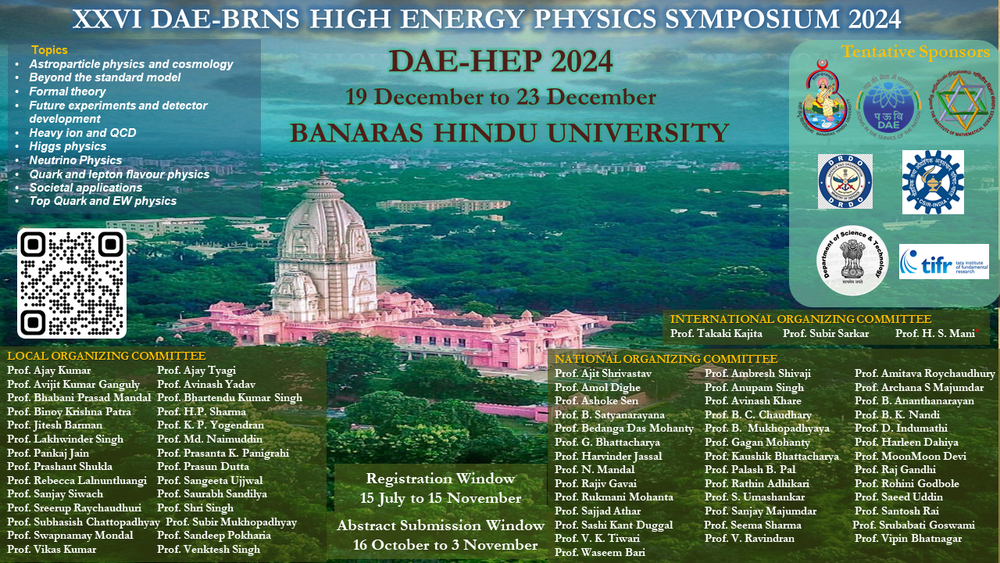Speaker
Description
The angular distribution of atmospheric cosmic-muons is studied using PYTHIA8 simulations and the simulation results were contrasted with the experimental data. In this work, the standalone PYTHIA8 code is augmented by adding oxygen molecules in a relative abundance of 78:22 (Nitrogen:Oxygen) to resemble a more realistic atmosphere [1]. The integrated vertical intensity $(I_{\mu}(\theta))$ of cosmic-muons varies with $cos^n\theta$ where $\theta$ is the zenith angle and $n$ is the exponent term. The experimental data were measured at two surface laboratories [SINP (Kolkata) & UCIL (Jadugoda)]. The PYTHIA8 simulation results are compared with these experimental data and also with the published data where the different $n$ values show the effect of different altitudes from the sea-level. The simulated vertical flux intensity $(I_{\mu}(\theta))$ as a function of the zenith angle $(\theta)$ of cosmic-muons shows a good level of agreement with the spectral shape of our experimental data as well as with that from literature. The integrated vertical muon flux $(I_{\mu}(\theta))$ and the exponent term $(n)$ are extracted fitting all the experimental data for each case. The vertical flux intensity of cosmic muons has been characterized as a function of momentum $(p)$ and energy $(E)$. Moreover, PYTHIA8 simulation study is done for the charge asymmetry of the number of positive and negative cosmic muons and for the relative difference of the counts of cosmic muons and muon neutrinos also. This study highlights the challenge of PYTHIA8 simulation in the astrophysics arena in the context of extensive air showers (EAS) improving its predictive power by incorporating a more realistic atmospheric model.
References:
- B. H. Wani, T. Sinha, G. Banerjee and W. Bari, International Journal of Modern Physics A 0, 2450093 (0), https://doi.org/10.1142/S0217751X24500933, doi:10.1142/S0217751X24500933.

